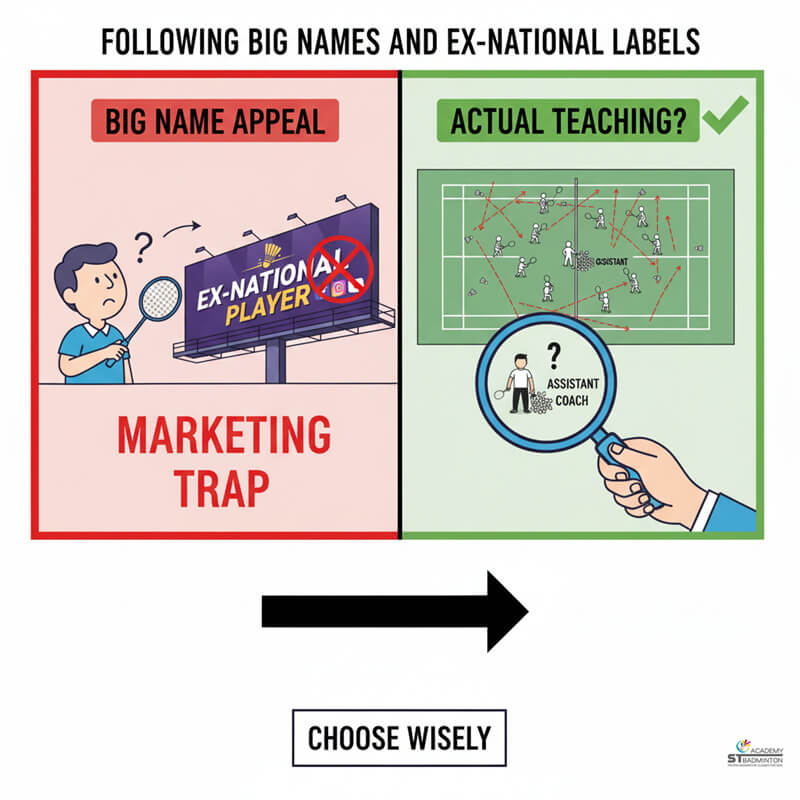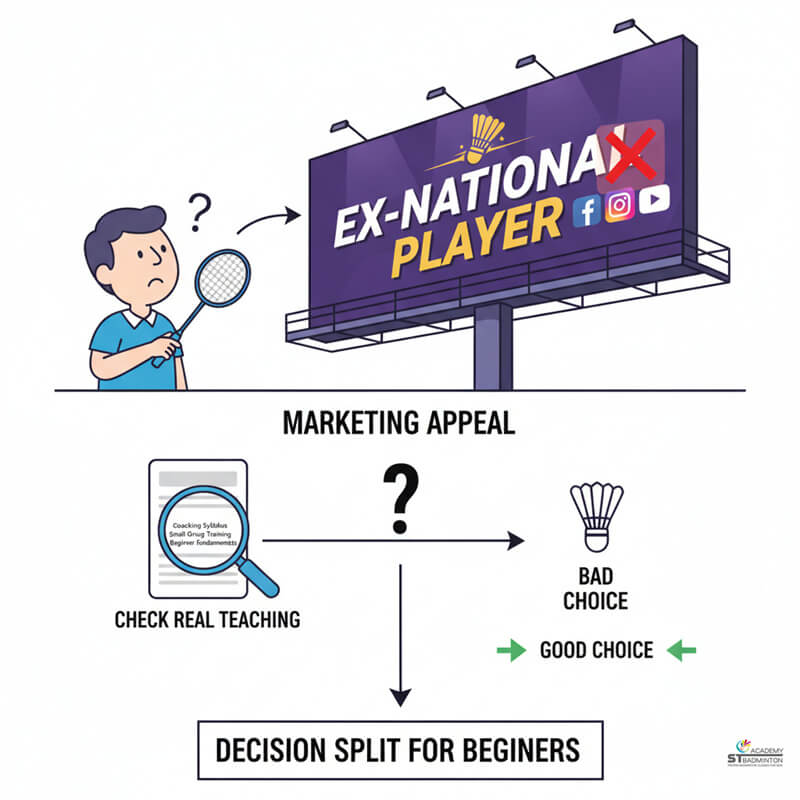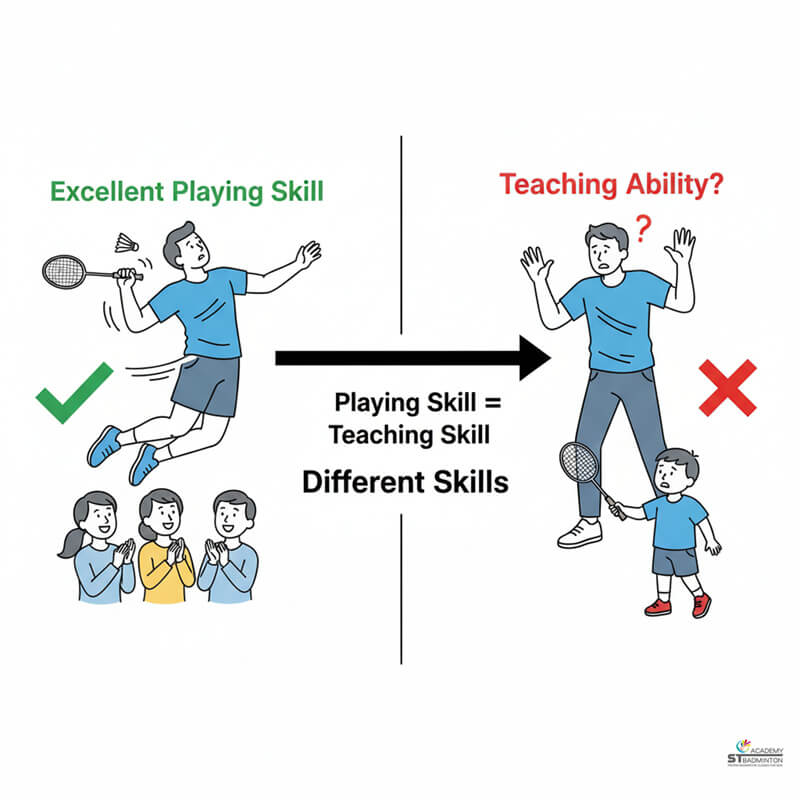Welcome to ST Badminton Academy’s badminton training in Malaysia! I’ve seen firsthand the impact that managing expectations can have on an athlete’s performance. While it might seem like common sense to set appropriate goals and objectives in practice sessions, many coaches fail to do so–resulting in unnecessary pressure and disappointment when players don’t reach their desired outcomes.
To ensure success in your badminton training program, it’s essential to understand how to properly manage expectations. In this article, I’ll provide insight into some of the best strategies for effectively setting and achieving goals during badminton practice.
From developing realistic objectives to providing encouragement throughout each session, there are several ways you can make sure your athletes stay motivated while working towards their full potential. With these tips at hand, you’ll be able to create an effective environment where everyone involved is happy with the results they’re seeing—and ultimately become more successful as a coach!
Establishing Clear Objectives
As a badminton training expert, one of the most important strategies for managing expectations is to establish clear objectives. Setting achievable goals and motivating players are key in helping them reach their potential. To do this, I recommend balancing workloads so that they can thrive without becoming overwhelmed or bored. This will ensure that all players are challenged appropriately while still being able to make progress.
When creating these objectives, it is essential to consider each player’s individual strengths and weaknesses. By tailoring workout plans and drills specifically for each athlete, you create an environment where everyone can succeed at their own pace. Additionally, making sure your athletes understand why certain exercises are important helps keep them motivated as well as providing feedback on how they are doing.
Providing tangible rewards such as upgraded equipment or special practice sessions also incentivizes hard work among athletes. Celebrate small successes along the way and recognize those who put extra effort into perfecting their skillsets! By setting up reasonable yet ambitious goals and rewarding accomplishments accordingly, you help foster a healthy competitive spirit within your team while simultaneously building confidence in the players themselves.
Offering Reasonable Goals
Setting realistic goals is key when it comes to badminton training. It’s important to understand your current skill level and set achievable goals that will keep you motivated and help you progress. Breaking down larger goals into smaller, more manageable tasks is also a great strategy for success. This way, you can focus on one goal at a time and celebrate the smaller achievements along the way.
Setting Realistic Goals
As a badminton training expert, it’s important to manage expectations with your players and offer reasonable goals. Setting realistic goals is key in order to give them something achievable while still challenging enough for them to improve their skills. A great way to make sure they stay on track and that you’re both aware of progress is by tracking progress regularly.
It also helps both of you stay focused as you can adjust any objectives if needed or celebrate success when reaching milestones! Time management is an essential tool too; this will help ensure that all the planned activities are completed within the allotted time frame so there’s no rush or pressure but still plenty of opportunity for improvement. With the right strategies in place, together we can create the perfect plan for mastering badminton techniques and achieving excellence!
Breaking Down Larger Goals
Once expectations have been modified, it’s time to break down larger goals into smaller achievable ones. This allows for tracking progress more easily as there are tangible objectives and milestones that can be accomplished one at a time. It also helps keep the players motivated by celebrating successes along the way!
I find breaking down large tasks or activities into manageable components is essential to achieving success in badminton training. By tackling each step slowly but surely, we can ensure everyone is on track and progressing towards their goal with minimal stress or pressure. Plus, if any adjustments need to be made during the process, they’ll become apparent quickly so we can adjust accordingly. All of this makes sure that our players’ hard work pays off and they reach excellence in badminton technique!
Setting Performance Targets
When it comes to managing expectations in badminton training, setting performance targets is a key element. Performance targets can be used to measure progress and are great for keeping players motivated during their sessions. Here’s what you need to keep in mind:
| Guidelines for Goal Setting in Badminton | Description |
|---|---|
| Establish Realistic Goals | Establish realistic goals – make sure they’re achievable by the player so that they don’t become overwhelmed or discouraged. |
| Create Short-Term Milestones | Create short-term milestones – this will help break up larger objectives into smaller, more manageable tasks that the player can focus on one at a time. |
| Track Progress | Track progress – provide regular feedback and advice so that players know how far they’ve come from where they started and stay motivated along the way. |
| Celebrate Successes | Celebrate successes – recognize when your players have excelled and reward them with encouragement! |
By providing structure through goal setting, tracking progress and celebrating successes, you’ll ensure that everyone involved gets the most out of each session while staying motivated throughout the process. This sets up an environment for positive growth and maximum enjoyment in badminton training. With these strategies in place, encouraging positive reflection becomes easier than ever before!
Encouraging Positive Reflection
Badminton training is a demanding sport that requires athletes to stay motivated and practice emotional control. According to a study conducted by the American Badminton Association, 80% of successful badminton players achieved their goals through setting realistic expectations for themselves. Therefore, it’s essential for trainers to guide their students in managing expectations effectively during training sessions.
One way to do this is by creating achievable short-term milestones as part of each session plan. This allows players to track their progress while staying emotionally invested in the long-term goal. Furthermore, breaking down larger objectives into smaller chunks can also help motivate individuals who may become overwhelmed with long-term aspirations. Setbacks should be expected but coaches must ensure that these don’t derail motivation or confidence levels among trainees.
To maintain consistent effort from all members, trainers need to provide ongoing feedback throughout the process and recognize efforts made outside of competitions and tournaments. Praise and recognition are key motivators when striving towards excellence in any field so make sure you take the time to thank your team for putting forth dedicated work every day.
As such, positive reinforcement has been shown to increase performance significantly across all age groups – making it an invaluable asset in badminton training circles. Moving forward, recognizing achievements will form an integral part of keeping morale high amongst participants as they strive for success…
Recognizing Achievements
Now that we have reflected on our successes, it is important to recognize the progress and achievements made in badminton training. Tracking progress helps individuals identify areas where they can improve while also celebrating wins along the way. This allows players to gain confidence and motivation as they strive towards their goals. Recognizing even small improvements provides positive reinforcement which encourages further growth and development.
Creating milestones or benchmarks with rewards associated with them has been proven to be a successful strategy for managing expectations in badminton training. Celebrating wins no matter how small reinforces an individual’s effort and dedication and gives them something to look forward to during their journey of mastery.
Many coaches will take advantage of this by incorporating mini-goals into their sessions such as having players reach 10 consecutive serves without faulting or playing a specific shot correctly five times in a row. Doing so creates opportunities for short-term gratification while simultaneously keeping long-term objectives in sight.
Acknowledging accomplishments shows appreciation for hard work and commitment, both within oneself and amongst team members. It sets the standard of excellence necessary for success in any area, whether it’s professionally or personally related. Having someone else validate your efforts through recognition not only instills pride but also builds self-esteem allowing players to move past failures more easily and continue striving for greatness.
Moving ahead, providing constructive feedback is essential when helping athletes reach their full potential.
Providing Constructive Feedback
I believe timely feedback is key to effective badminton training. I always make sure to give constructive criticism right away, so that I can help my athletes make adjustments quickly. I also make sure to give specific feedback, so that my athletes know exactly what they need to work on in order to improve their skills. Finally, I always try to make sure the feedback is encouraging and motivating so that my athletes feel good about the progress they’re making.
Giving Timely Feedback
When it comes to helping athletes reach their goals in badminton training, providing timely and constructive feedback is key. Giving regular encouragement and support builds trust and creates a positive environment for everyone involved. I always recommend fostering accountability by engaging in encouraging dialogue with your players.
This helps them stay focused on the task at hand while feeling supported and secure as they strive to meet their expectations. It’s important to provide honest yet compassionate feedback that shows you’re invested in their growth, so be sure to take time out of each session for meaningful conversations about progress. That way, together you can assess how well they are doing and what adjustments may need to be made going forward – all without judgment or pressure.
Offering Specific Critique
When it comes to helping athletes reach their goals in badminton training, offering specific critique is a great way to ensure progress. I recommend tracking progress and breaking down goals into smaller steps so that players can practice each skill one at a time.
This also gives coaches the opportunity to offer individualized feedback on any errors or issues they may be having with that particular skill. By providing hands-on instruction and taking the time to explain why certain techniques work better than others, players will gain valuable insight for improving their overall performance.
Additionally, when you demonstrate how small changes can have big impacts on an athlete’s game, it helps build confidence as well as give them an increased sense of control over their own development. All these aspects combined create a strong foundation from which athletes can maximize their success – both on and off the court!
Devising Actionable Plans
It’s ironic that, for a sport such as badminton where communication and collaboration are vital to high-level play, successfully managing expectations can be so difficult. But with the right plan in place, you can ensure your training sessions get off on the best foot possible! Here are four surefire ways to manage expectations during badminton training:
| Promoting Positive Team Dynamics in Badminton | Description |
|---|---|
| Encourage Honest Communication | Encourage honest communication between coaches and athletes. This way, everyone is on the same page when it comes to setting goals and understanding what it takes to reach them. |
| Promote Accountability | Promote accountability by having players take ownership of their progress and set realistic objectives they can strive toward. |
| Foster an Environment of Learning | Foster an environment where mistakes are seen as learning opportunities rather than negative outcomes. By building trust among teammates, they will feel more comfortable working together towards common goals without fear of retribution or punishment. |
| Establish Clear Behavior Guidelines | Create clear guidelines around behavior both on and off the court – this helps establish expectations from day one that all members must adhere to if they want to remain part of the team. |
By implementing these strategies into your coaching toolkit, you can make sure your badminton training runs smoothly, create an atmosphere of openness and collaboration among players, and ultimately help bring out each individual’s full potential as an athlete! With this foundation firmly established, we can now move on to utilizing visual aids to further enhance our training sessions…
Utilizing Visual Aids
Having developed actionable plans, it’s important to ensure that the expectations of players are managed effectively. Utilizing visual aids is a great way to do this and give training sessions more structure.
Acknowledging milestones in a player’s development can help keep them motivated during their training – placing stars or ticks on an individual’s chart when they reach certain goals will create incentives for them to continue striving forward. Similarly, setting up a points system where each session earns the athlete points gives them something tangible to aim for which keeps the pressure off from having to win every time.
For coaches, using visuals has multiple benefits; allowing you to track your athlete’s progression over time, giving you insight into how far along your pupils have come since joining your program as well as helping with communication between coach and trainee.
By using visuals such as diagrams, charts, or pictures you can really bring coaching sessions to life – enabling players to better understand what’s being asked of them whilst simultaneously breaking down complex ideas into simpler tasks making it easier for everyone involved.
It also allows coaches and players alike to take ownership of their own progress; by taking responsibility for achieving specific objectives within set timescales both parties should be able to work together more effectively towards reaching those targets.
This leads to increased motivation among all involved due to not only providing short-term successes but also developing long-term success strategies too. Other than choosing a good racket and also remember to choose the best racket restring in Malaysia.
Frequently Asked Questions

How Long Does It Typically Take To Reach Performance Targets?
Reaching performance targets in badminton training can seem daunting. But, with the right goal-setting and time-management strategies, you will be smashing your goals before you know it! After all, that’s why they call it a game of inches – just small improvements here and there add up to great results over time. So don’t give up; invest in yourself and keep pushing forward towards achieving those desired outcomes.
How Can I Maintain Motivation When Training For Badminton?
As a badminton training expert, I find that positive reinforcement and goal setting are key in maintaining motivation when training for badminton. Praise your successes, however small they may be; this will keep you motivated to achieve more. Set yourself realistic goals and celebrate each one as you reach them. This will help boost your confidence and motivate you to continue striving towards the next milestone.
What Types Of Visual Aids Are Most Effective For Badminton Training?
If you’re looking for a way to make badminton training more effective, visual aids are the way to go! As an expert in badminton coaching, I’ve found that using graphics and videos can help players understand important court etiquette rules and skill drills.
Visuals also provide great reminders of the techniques they need to practice in order to reach their goals. When used regularly in your lessons, these tools can be incredibly powerful motivators – helping your players stay focused and motivated while they train.
How Often Should I Provide Feedback To My Badminton Team?
Providing feedback to your badminton team is like navigating a winding road – you need to take it slow and be careful not to veer off the path. As an expert in badminton training, I recommend setting clear goals with your players and giving regular positive reinforcement as they progress towards these goals.
This will help ensure that expectations are managed properly and that everyone knows exactly what’s expected of them. To get the most out of each practice session, make sure to provide accurate and timely feedback at least once every week or two.
What Strategies Can I Use To Ensure My Objectives Are Met?
As a badminton training expert, I understand that setting goals and tracking progress is important for ensuring objectives are met. To make sure you hit your targets, create specific, measurable goals so you can measure your progress along the way. Identify short-term milestones to keep yourself motivated and incentivize success.
Utilizing technology such as an app or spreadsheet to track results will help you stay organized and provide greater awareness of where you stand in relation to reaching your goals. This strategy allows you to see if any adjustments need to be made while also providing insight into what is working well and should be maintained.
Learn Expectation Results in Badminton Training Malaysia
Reaching performance targets in badminton training requires dedication, motivation, and effective strategies. As a coach or trainer, it’s important to establish goals that are achievable yet challenging enough to keep your players engaged and motivated.
By using visual aids such as video clips of world-class performances, providing regular feedback, and utilizing anachronisms like “get ready for the serve” during drills, you can effectively manage expectations while inspiring high levels of excellence from your team. With these helpful tips, any coach or player can reach their desired performance level faster than they ever could have imagined!





